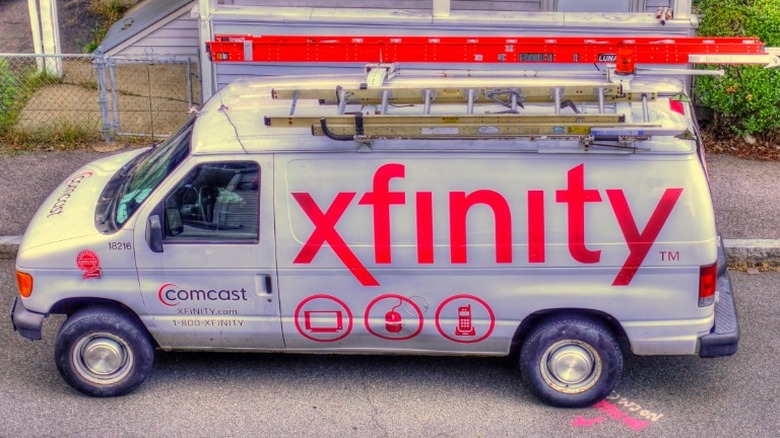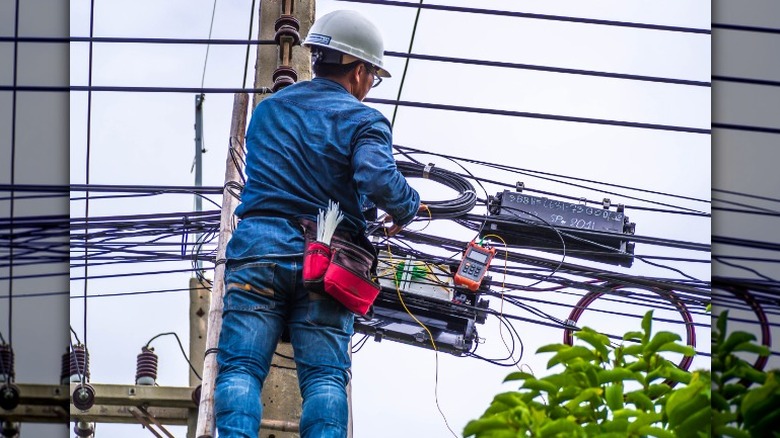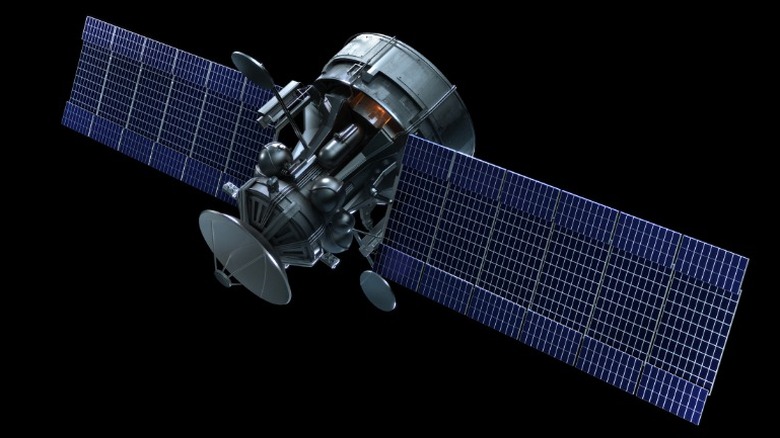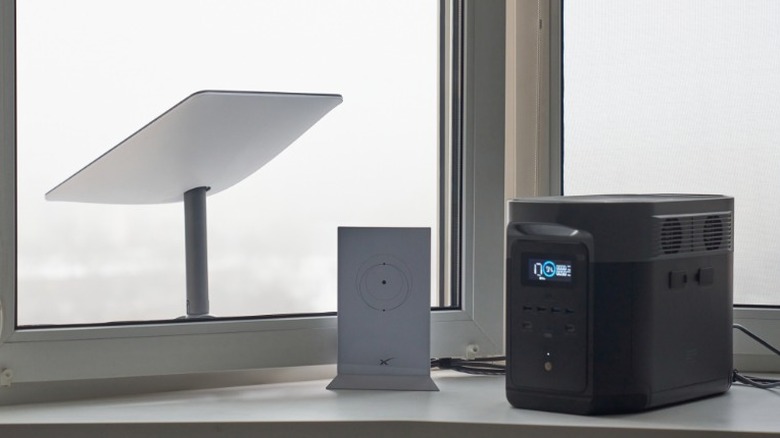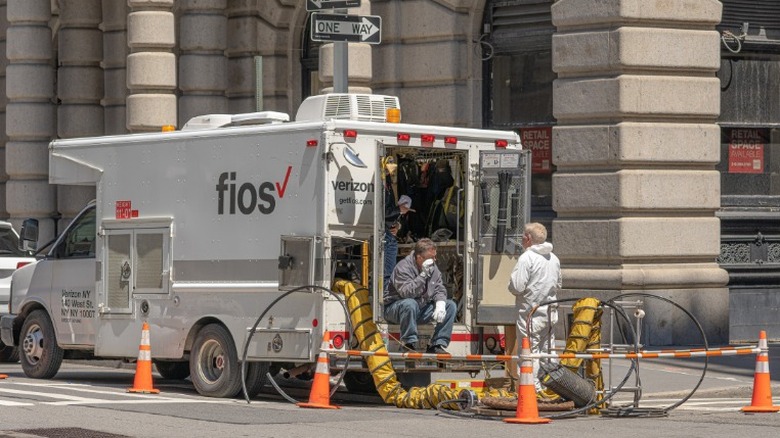Major Internet Service Providers In The U.S. Ranked Worst To Best
Of the many things within American culture that we love to hate, our internet service providers (ISP) are probably at the top of the list. It does not take long to search online for horror stories and abundant memes dunking on common providers across the country, suggesting that many customer service experiences seem to elicit a deep-seated hatred from their customers.
Despite this sordid affair with much-needed internet service, are all the tales filled with woe? In the United States, there are dozens of ISPs providing connections to wide-ranging areas of coverage, from the fastest, cheapest, and best-rated regional service owned by the City of Chattanooga to AT&T, the nationwide-serving juggernaut of communications. Pricing can also be widely varied, with rate increases being a point of serious contention, especially since residents of more than 100 countries enjoy cheaper access than us — residents of Seoul receive faster service for about $30 on average, more than half the cost of many American plans. Regardless, some of our providers do a much better job than others, so here is a list of major providers of non-cellular service ranked from the worst to best.
Xfinity
Comcast has been a regular punching bag and poster boy for hated service providers. Among complaints about Comcast are stories about the Byzantine process to cancel the service, including news stories that broadcast recordings of customers being badgered by representatives trying to cancel their plan. Comcast may have received a lot of flack for those past practices, but the company hasn't gone away, it just changed its name to Xfinity.
Most of us know changing a name does not automatically make everything better for a company. However, it can be an opportunity to set things straight. Based on more current information — those news stories are around eight years old — it looks like a mixed bag. ZDNet, a long-time business technology online media outlet, gave Xfinity high marks as recently as 2021 for offering fast speeds on its fiber network, good reliability, and a wide range of options. It also notes its poor customer service and limited availability of the fastest fiber optic network, although it has likely expanded since then. It is not clear why the writer says it is one of the best.
Customer reviews on Sitejabber, an online review site, are less forgiving. Xfinity receives an overall score of 1.3 out of 5 stars with comments remarking on the company being run by crooks and that the corporation is evil and immoral. In 2017, Comcast was also fined $2.3 million for charging customers for services never received.
Spectrum
Formed as a result of a Charter and TimeWarner merger, Spectrum is the second largest provider, covering 41 states. Giant mergers often result in worsening customer experience. Spectrum enjoys the dubious distinction of being the subject of an SNL skit from 2016 featuring Kieran Culkin highlighting the near-impossible task of canceling cable.
Spectrum Internet claims to have upwards of 450 million IP devices connected to its network and serves 32 million customers in 41 states, making it one of the largest in the country. Pricing starts at an affordable $49 for a relatively generous 200 Mbps download speed and it offers up to 1,000 Mbps with no data caps, which is generous, although the upload cap of 35 Mbps is disappointing. Service is delivered through cable or fiber, which helps it to avoid having stiflingly slow internet access, and all can be combined with TV. Spectrum service receives high marks from media reviews, including a 3.9/5 from U.S. News and a 3.9/5 from Forbes.
There seems to be some disconnect between the official reviewers' opinions and those of customers based on comments posted online. Customer reviews should always be taken with a grain of salt, but still offer a glimpse of the public's general feelings. Sitejabber reviews, for example, leave Spectrum with a lowly overall score of 1 star, with comments including remarks saying it is overpriced, expensive, deceptive, and the customer service is awful. While that could be an anomaly, Trustpilot reviews also add up to barely more than a single star, with 93% of reviews being the lowest possible grade.
HughesNet
For many Americans living across the vast open spaces of this country, the only internet access is via satellite. This leaves few options and they tend to be pricey. One of the oldest and largest operators of satellite broadband is HughesNet, with its first consumer services via satellite commencing in the 1990s.
What you need to know about satellite broadband is that it is highly limited. Speeds of data transfer are limited to a maximum of 25 Mbps and total data packages are limited to plans offering from 15 GB to 100 GB per month, which compares very unfavorably to the 1,000+ GB of terrestrial internet providers.
However, if you live far outside of the city, your options may only be dial-up internet, with a maximum speed of 56 Bbps, over a phone line or this. Some locations, such as those deep into the mountains, may not even have phone service, making HughesNet the only connection to the world.
While data may be limited, costs are high. Prices start at $64.99 and range up to $149.99. All plans offer the same 25 Mbps speed, but data caps vary, although access is never cut. When your plan has used all its included data, speeds are limited to just 3 Mbps. Overall, HughesNet is a terrible value, but its existence is a godsend to many who eschew city life or whose work is what feeds the rest of us every day.
Starlink
As a part of the first private company tasked with shuttling cargo and personnel to the International Space Station, SpaceX has also launched its own communications network called Starlink. In contrast to HughesNet, which operates two satellites in geosynchronous orbit 22,000 miles above land, Starlink utilizes nearly 3,200 tiny satellites in low Earth orbit just 340 miles from land. They constantly travel around the Earth rather than being locked into a single position. That provides for much less latency with Starlink as information has a much shorter distance to travel.
The downside of the Starlink setup is the extensive initial investment, and the benefit is more reliable internet for consumers. The tradeoff is cost. Starlink's initial cost to consumers is very high, with an equipment cost of $599 and a service subscription starting at $110. The Starlink data cap is set for a generous 1,000 GB, and the service remains active after that but is throttled without paying additional fees.
In the Tom's Guide review of Starlink, reviewers found speeds down below 80 Mbps, which was significantly less than the advertised goal of 300. This is still far better than DSL and certainly better than dial-up. Starlink coverage is limited by the constellation of satellites but currently covers most of the contiguous United States along with Hawaii and parts of Alaska.
Cox Communications
Cox is a regional player in 19 states, with services concentrated around cities within those states. Its service area is broad but limited. Despite serving a wide geographical area, its total subscriber base number is nearly 7 million, making it a much smaller player in the market. This has its pros and cons for consumers.
Cox internet is provided through its extensive metro cable service. Speeds available are competitive but come with data caps. The pricing of Cox internet plans tend to be higher than those of its larger competitors, and customers are lured in by introductory offers that expire and then are coaxed toward higher-priced plans in future contracts. Two-year contracts are typical, and introductory prices, for example, may be set at $80 for its Gigblast 1,000 Mbps plan which will rise to $120 in year two.
Cox is a bit lacking in value and its long contracts are not favored by most consumers. Furthermore, being a smaller company, one might hope that gives the company the ability to offer better customer service. A J.D. Power survey for 2022 customer satisfaction found that Cox rated below its biggest competitor with middling scores for most parameters.
AT&T
As one of the largest internet providers in the U.S., AT&T covers most of the country with either DSL through the telephone lines or its new fiber optic network in limited but growing neighborhoods. Experiences with its service vary depending on which product you use, with satisfaction of the fiber networks enjoying much higher ratings.
Experiences with such a large company can vary widely simply due to the sheer volume of customer interactions possible. AT&T internet services cover 21 states, but the speeds available vary widely from one neighborhood to another. This is primarily because the most widely available service is delivered through phone lines for DSL and the fastest data speeds are only possible through its fiber-optic network, which is still under development. This leaves two-thirds of its customers with a low download speed and data caps.
It should be noted that in recent customer satisfaction surveys, AT&T fared well, receiving marks well above most of its competitors and above the average for the industry. Still, when a service cannot adequately offer competitive download speeds to more than a third of its customers, that brings it down in the rankings overall.
Verizon Fios
Verizon is a giant in the communications industry but is nationally known more for its cellular telephone service than it is home internet. And while most people are probably familiar with the "Can you hear me now?" part of the Verizon company, its broadband internet service is only available on the East Coast.
Fios is the brand name for Verizon's fiber optic network and offers the best data speeds, although the company also offers DSL and 5G options. Like AT&T, the fiber network is only in those neighborhoods where it has been built. However, coverage of the most highly populated area of the country, including New Jersey, New York City, and the vicinity, enjoys thorough implementation. Sadly, for anyone not in these densely populated neighborhoods, Verizon only offers you slow DSL. The DSL is offered only in a package with a landline telephone for $74.99 per month with a maximum download speed of 15 Mbps, which is expensive and very slow.
The good news for those in the coverage area is that Fios is highly rated. Fios comes with no lengthy contract requirements, no data caps, and up to 1,000 Mbps speeds. Furthermore, Verizon ranks highly in customer satisfaction surveys, which bodes well for potential subscribers.
Google Fiber
Google Fiber is a broadband service provider that, despite coming from one of the top five biggest companies on Earth, is quite small. However, due to the prominence of its parent company and the potential for it to grow, it is worth discussing.
At present time, Google Fiber is only available in 21 cities in 15 states, leaving most of us out in the cold. It launched in 2012 building out fiber optic networks in Kansas City and then moderately expanded until 2016 when the company decided to pause its growth. Plans to continue its buildout have recently restarted, but do not extend to nationwide coverage.
Google Fiber service is impressive. For just $70, users enjoy 1 Gbps upload and download speed with no data caps and no contracts, delivered to the home via two Google Wi-Fi devices. For an additional $30 per month, download speeds can be increased to 2 Gbps, one of the most generous consumer plans available, which represents a considerable value. Time will tell if this service ever does expand coast to coast. If it does, it will crush the competition with the best service of all.

